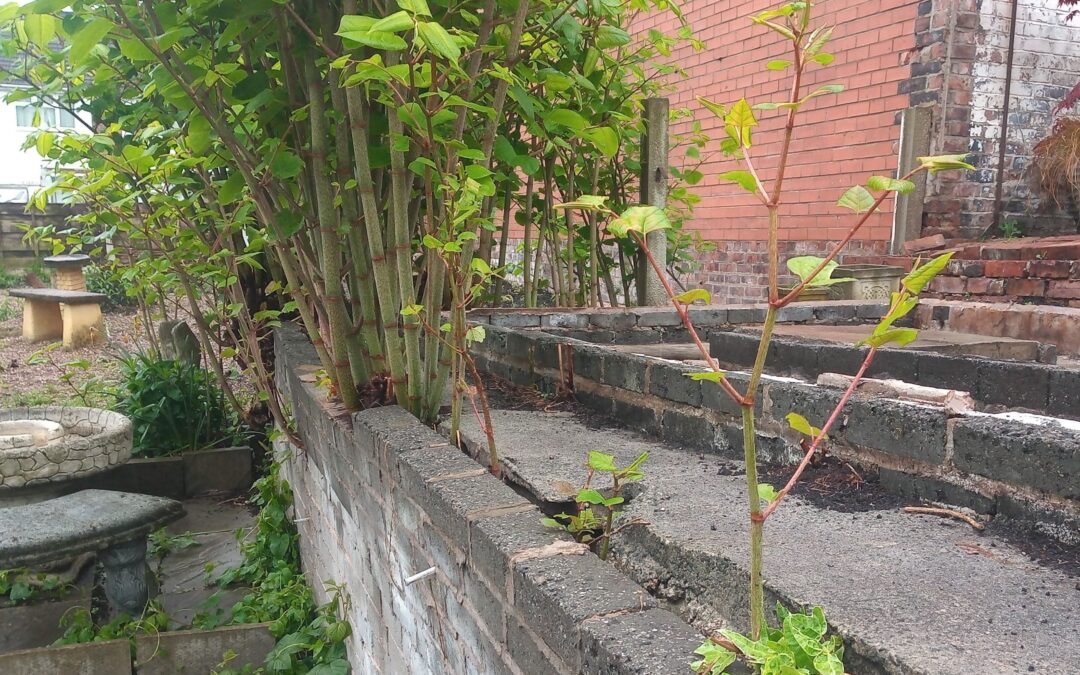Are you worried about Japanese knotweed invading your landscape design?
Here are some effective ways to protect your landscape from this invasive species.
Creating a beautiful landscape design requires a lot of hard work and dedication. However, this hard work can be undone if an invasive species like Japanese knotweed takes over your garden. Japanese knotweed is a fast-spreading plant that can damage your property and even affect its value. It can grow up to 10cm a day, forming dense thickets that can displace native plant species, damage concrete and brickwork, and lead to soil erosion. In this article, we will discuss how to protect your landscape design from Japanese knotweed infestation.
How to Protect Your Landscape Design from Japanese Knotweed Infestation
-
Identify Japanese Knotweed
The first step in protecting your landscape from Japanese knotweed is to identify it. Japanese knotweed has bamboo-like stems that are hollow and green, with purple speckles. The leaves are heart-shaped and grow in a zig-zag pattern along the stems. In the late summer, the plant produces small creamy-white flowers. If you suspect that you have Japanese knotweed in your garden, seek advice from a professionals like us.
-
Control Japanese Knotweed
If you have Japanese knotweed in your garden, it’s essential to control it. Japanese knotweed is very difficult to get rid of and can regrow from small fragments of the plant. The best way to control it is to hire a professional to remove it. They will use a combination of methods, including chemical treatments, excavation, and burial.
-
Prevent the Spread of Japanese Knotweed
Furthermore preventing the spread of Japanese knotweed is crucial to protect your landscape design. Nonetheless if you have Japanese knotweed in your garden, avoid disturbing the soil as this can cause the plant to spread. Do not cut or strim the plant, as this can cause the fragments to spread. If you need to move soil or plants from an area with Japanese knotweed, make sure to clean any equipment thoroughly before using it in another area.
-
Plant Non-Invasive Species
One way to protect your landscape from Japanese knotweed is to plant non-invasive species. Choose plants that are native to your area and are not invasive. These plants will be better adapted to your climate and will not harm your landscape design.
-
Monitor Your Garden
Regular monitoring of your garden is essential to detect any new Japanese knotweed growth. Check for new growth in the spring and summer, and if you see any, contact us immediately.
FAQs
Q: Can I remove Japanese knotweed myself?
A: It’s not recommended to remove Japanese knotweed yourself as it can be difficult to get rid of and can regrow from small fragments. It’s best to hire a professional to remove it.
Q: How does Japanese knotweed affect property value?
A: In addition Japanese knotweed can affect property value as it’s an invasive species that can cause damage to buildings and structures.
Q: How can you prevent Japanese knotweed from growing in my garden?
A: Moreover you can prevent Japanese knotweed from growing in your garden by not disturbing the soil, avoiding cutting or strimming the plant, and planting non-invasive species.
Additionally
Japanese knotweed is a highly invasive species that can damage your landscape design and even affect your property’s value. Therefore the key to protecting your landscape from Japanese knotweed infestation is to identify it, control it, prevent its spread, plant non-invasive species, and monitor your garden regularly. However by following these steps, you can protect your landscape from Japanese knotweed and enjoy a beautiful garden for years to come.
Contact Stephen on 07753682333 if you would like more advice.
